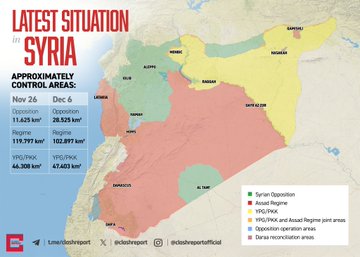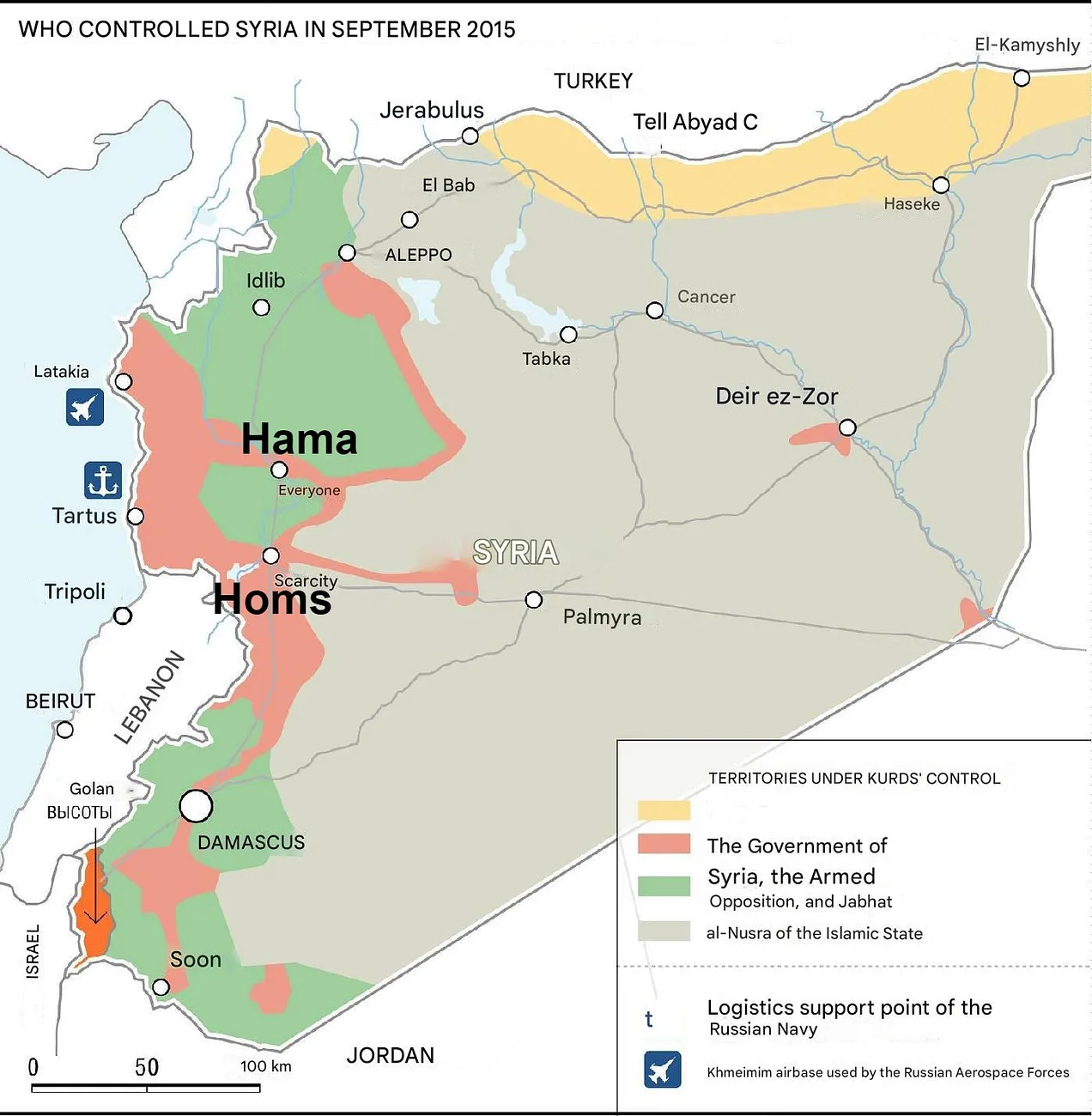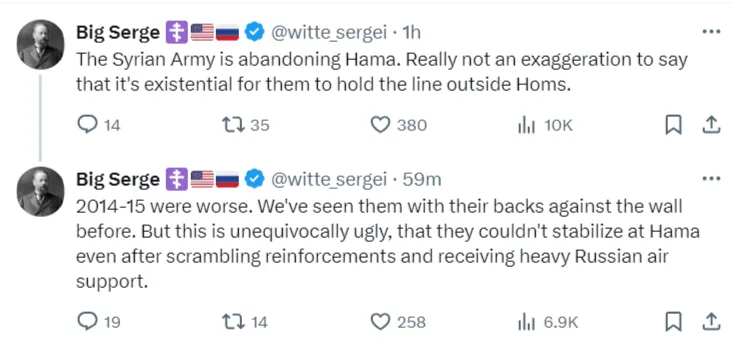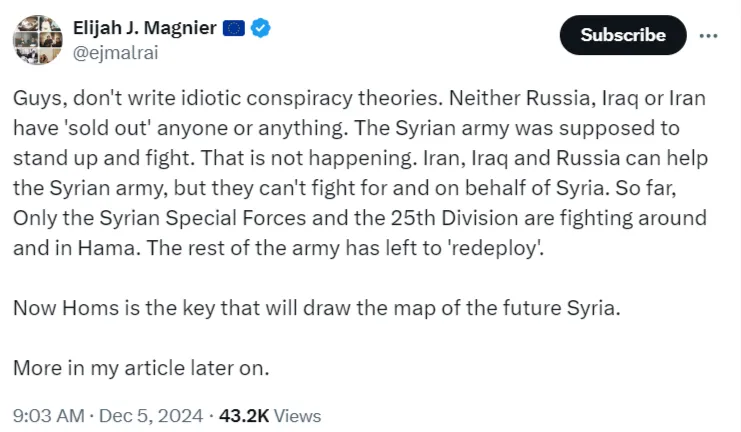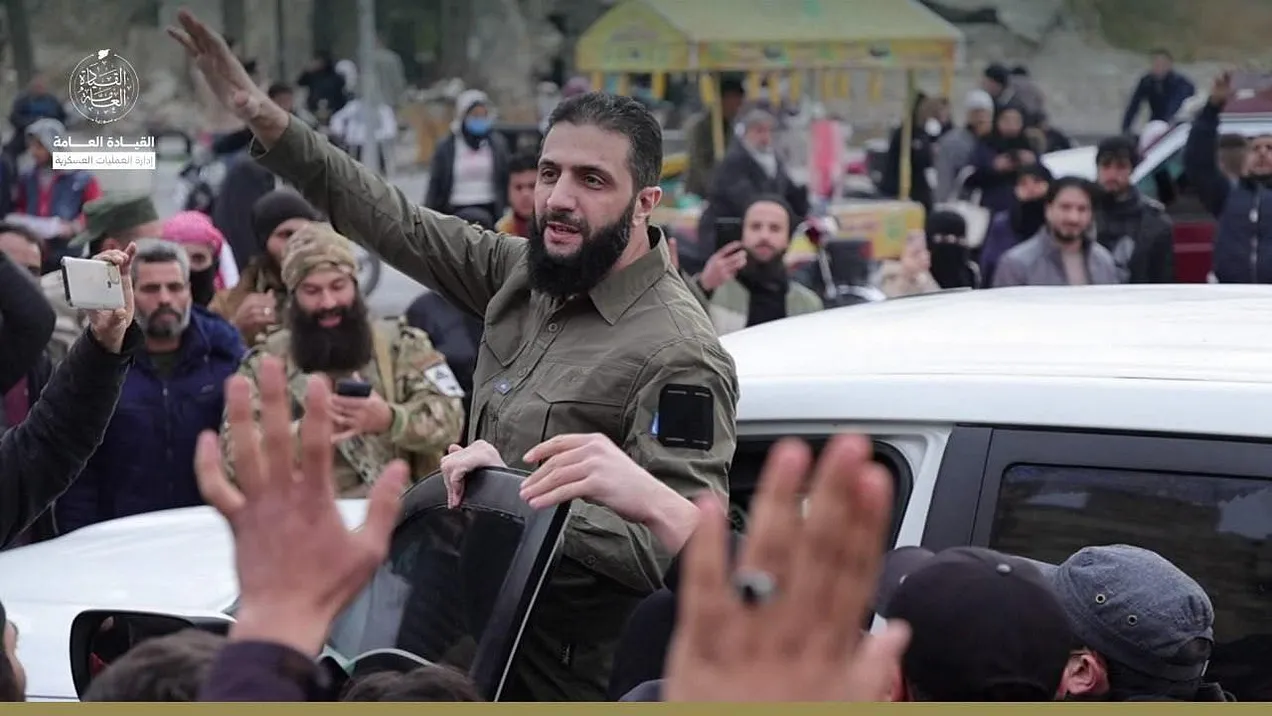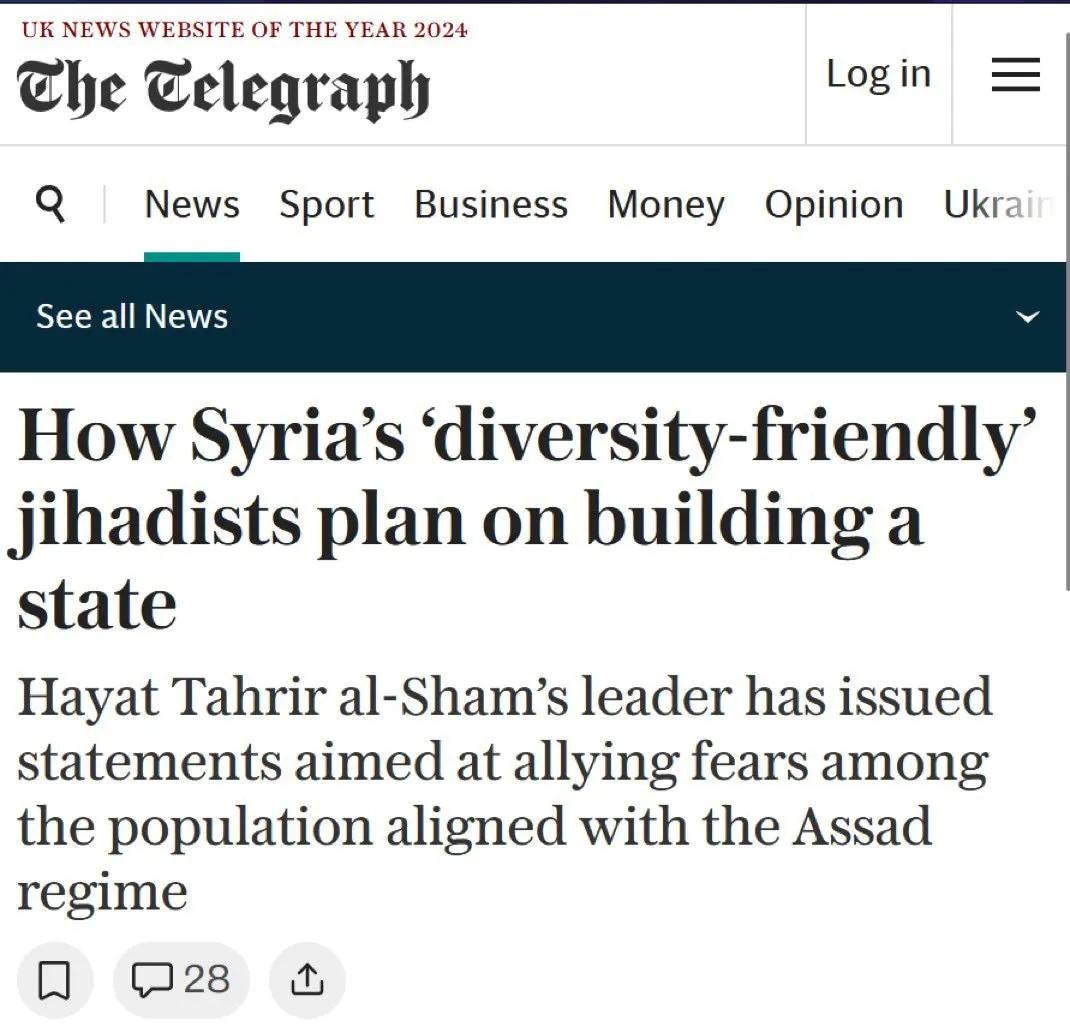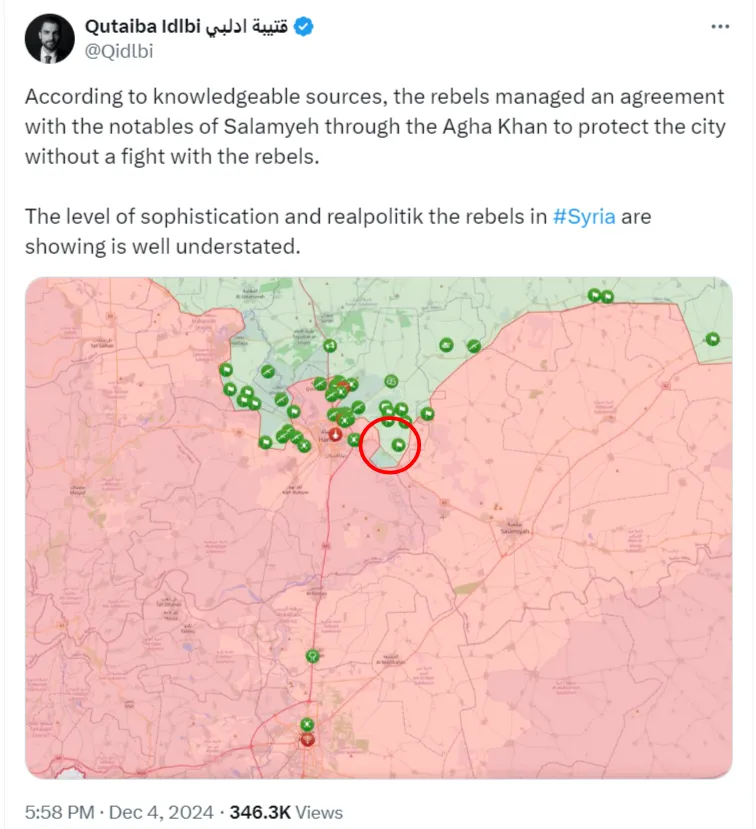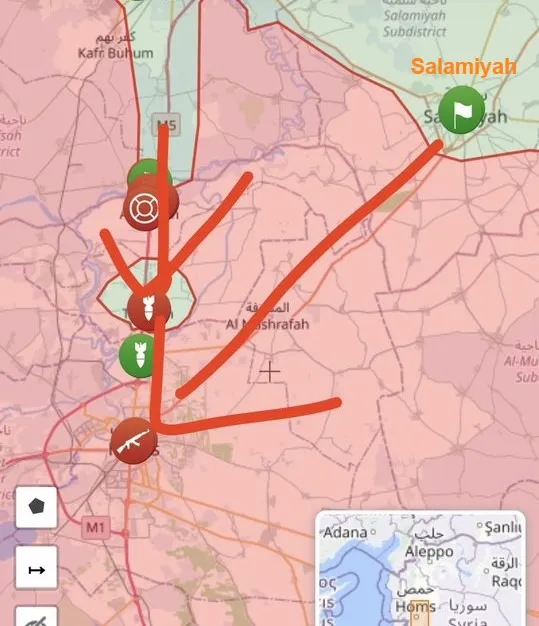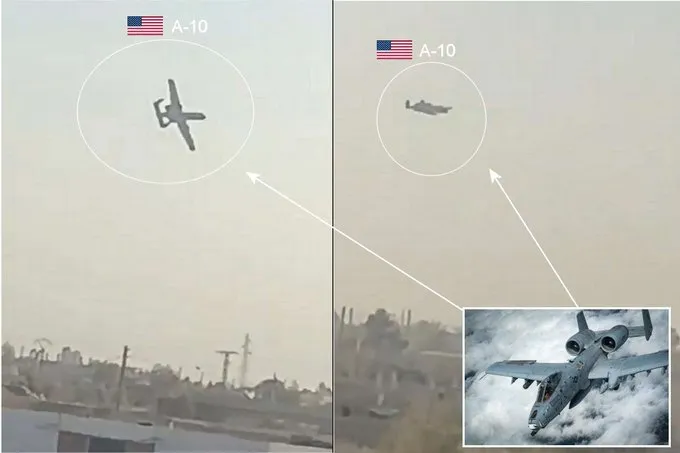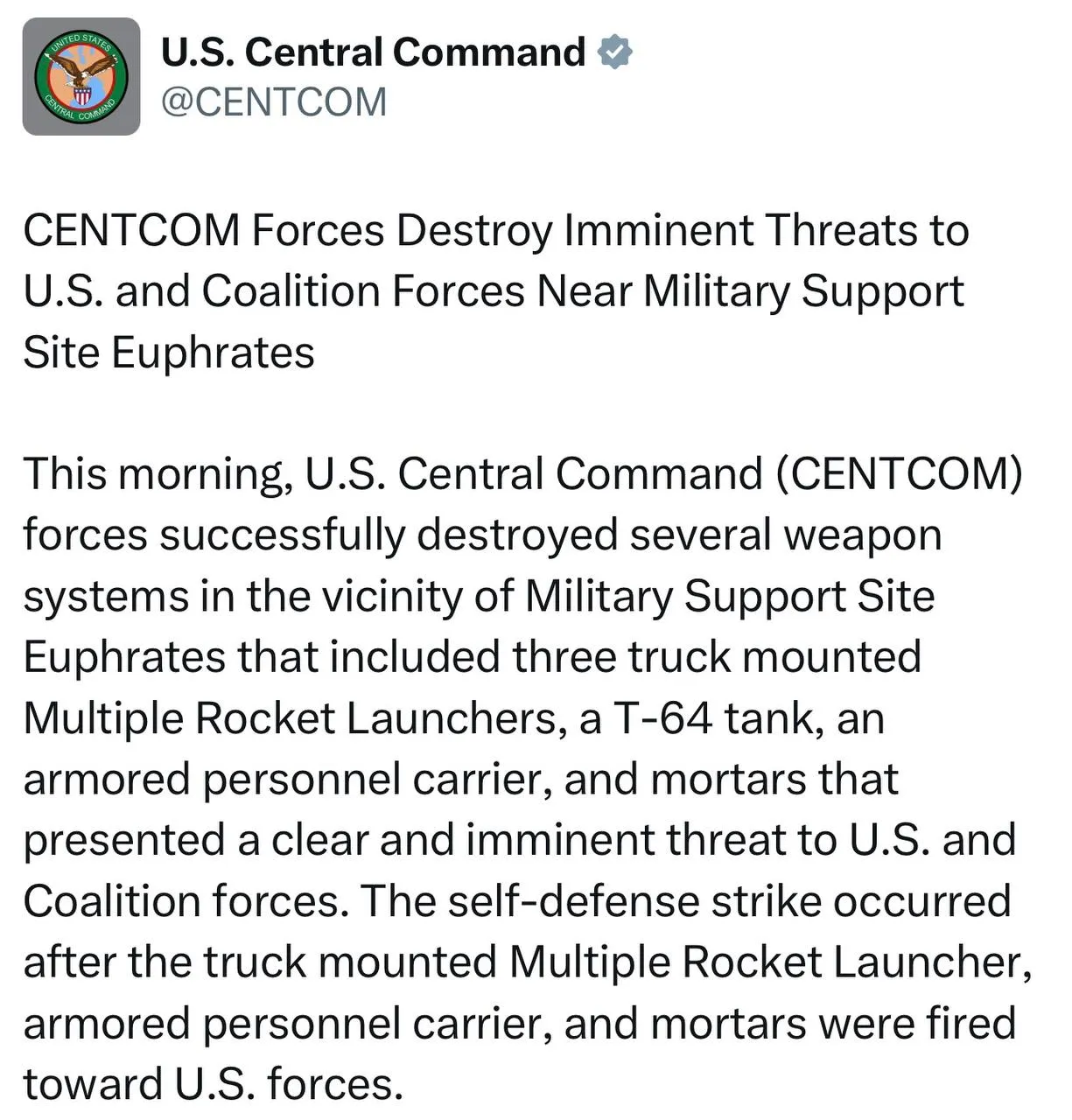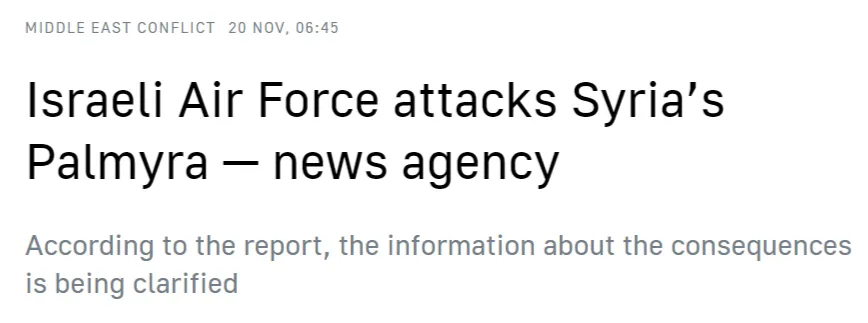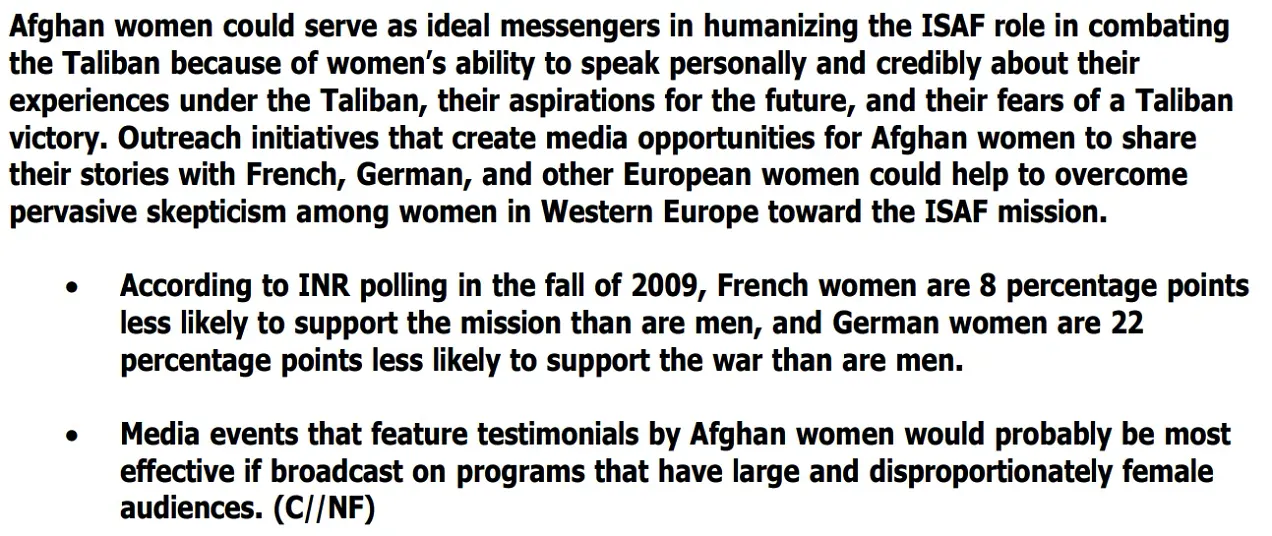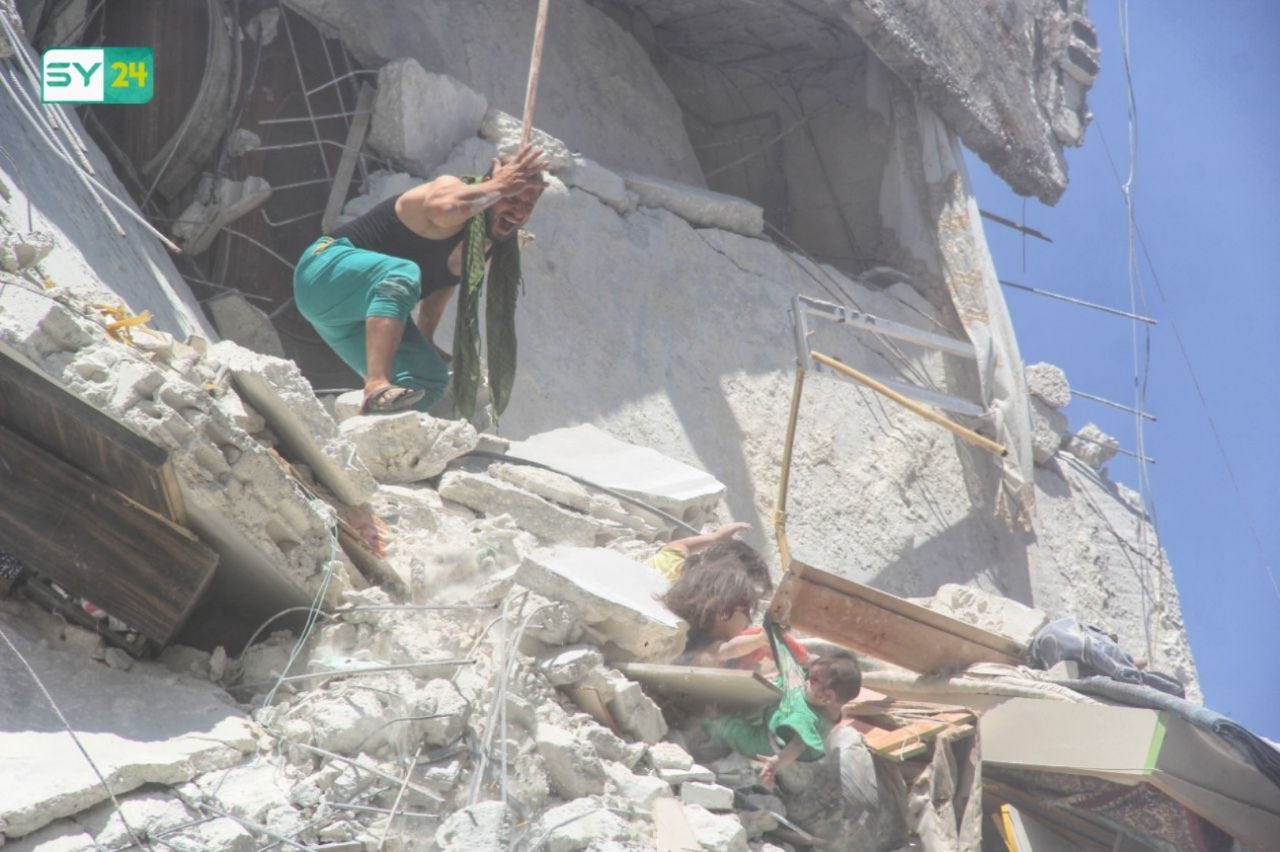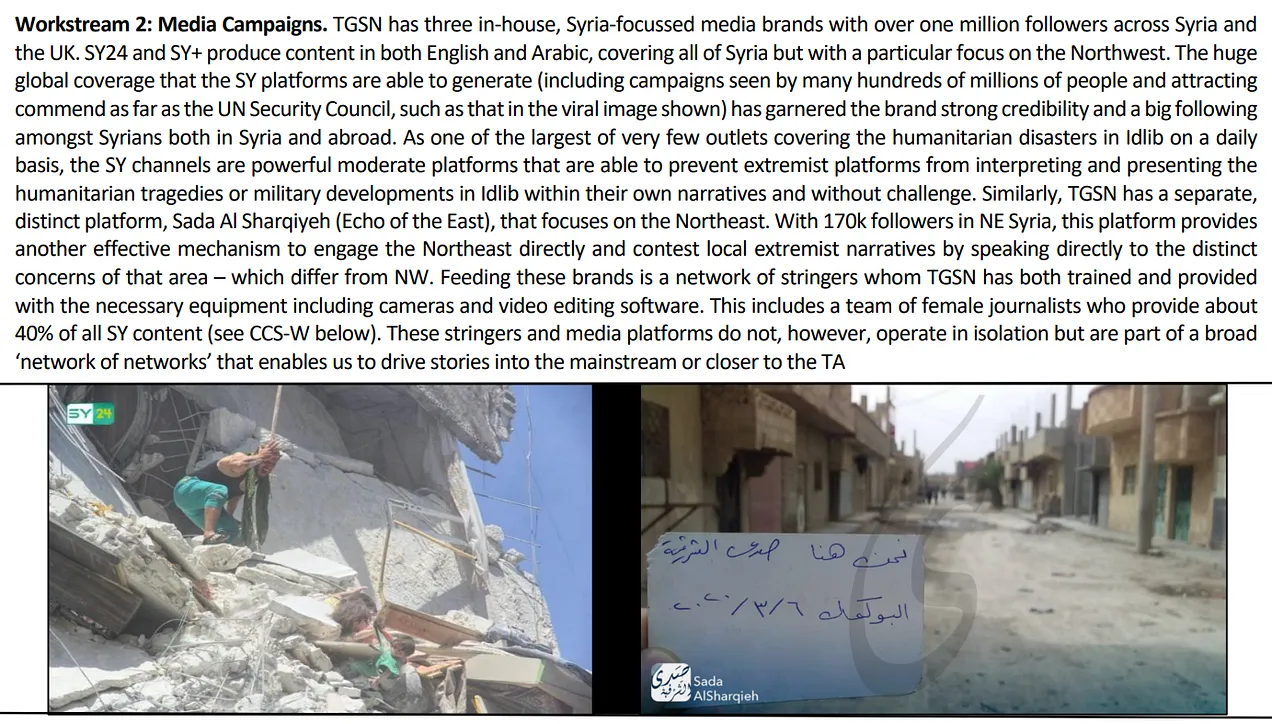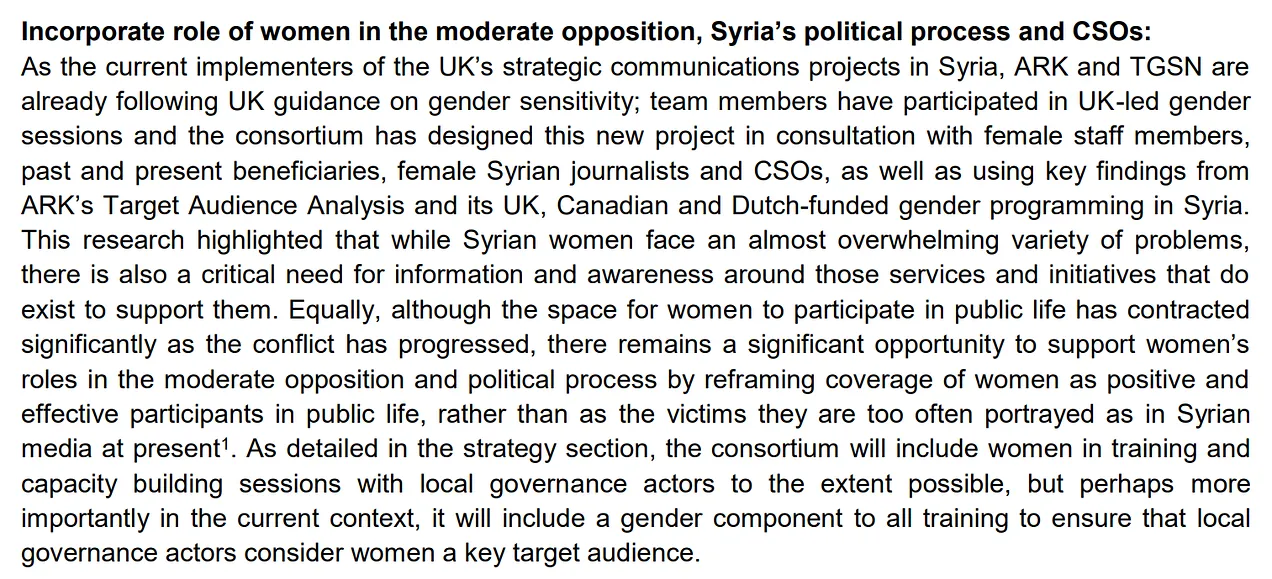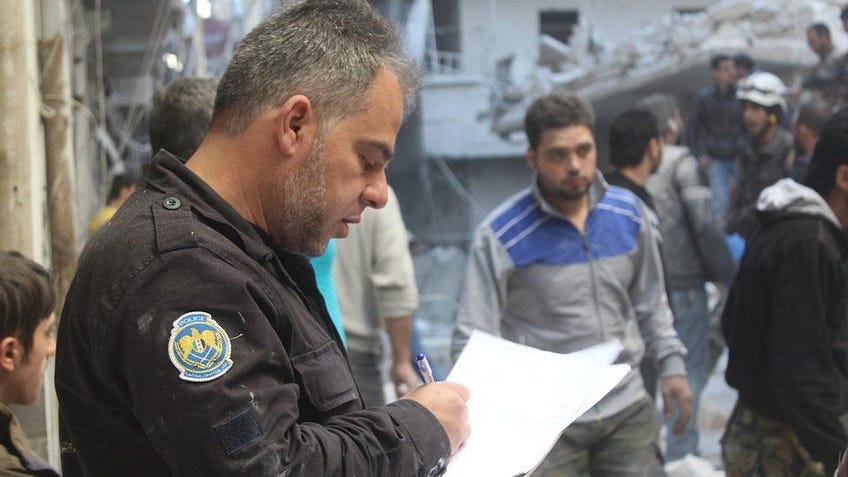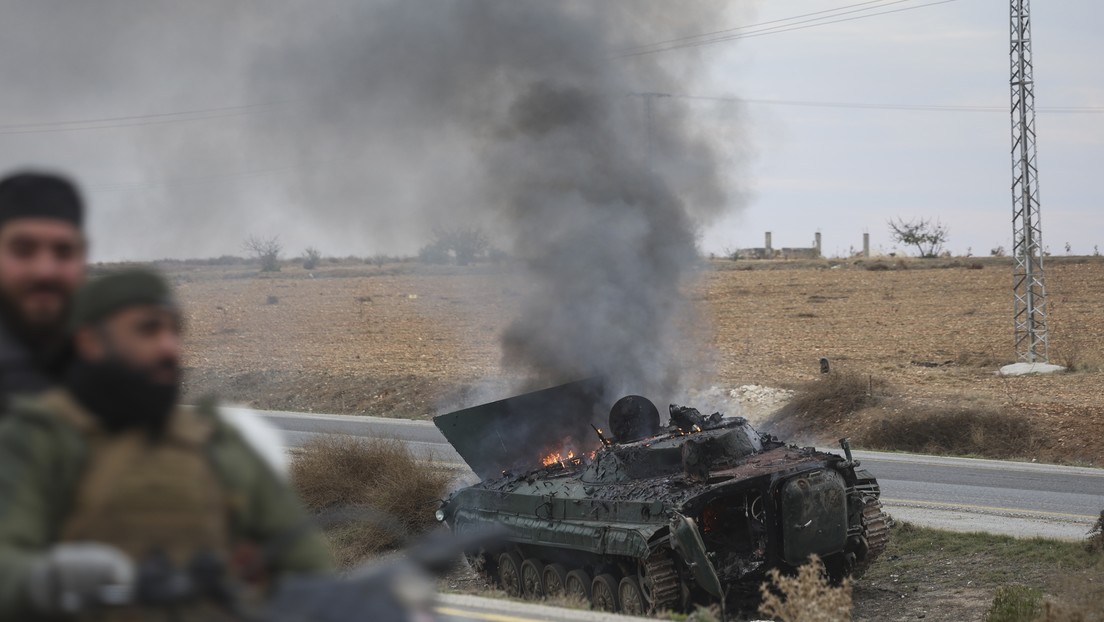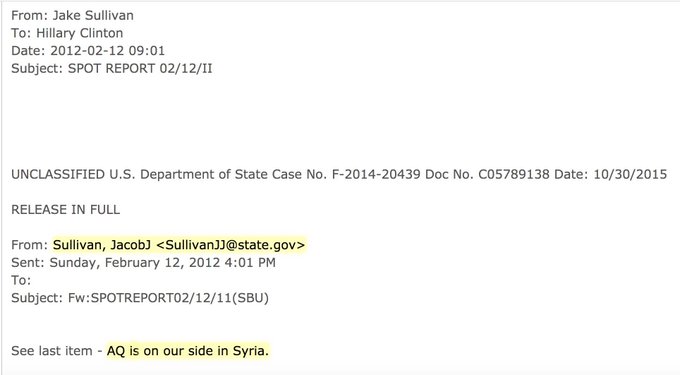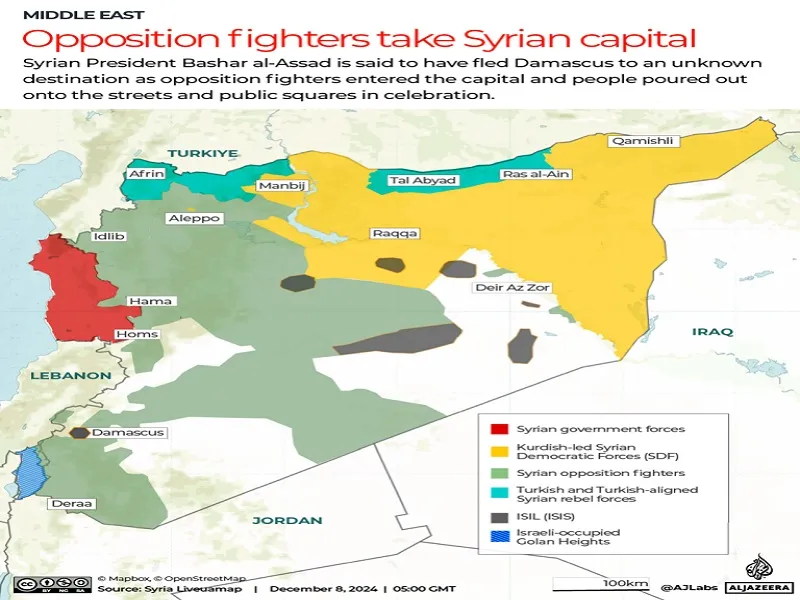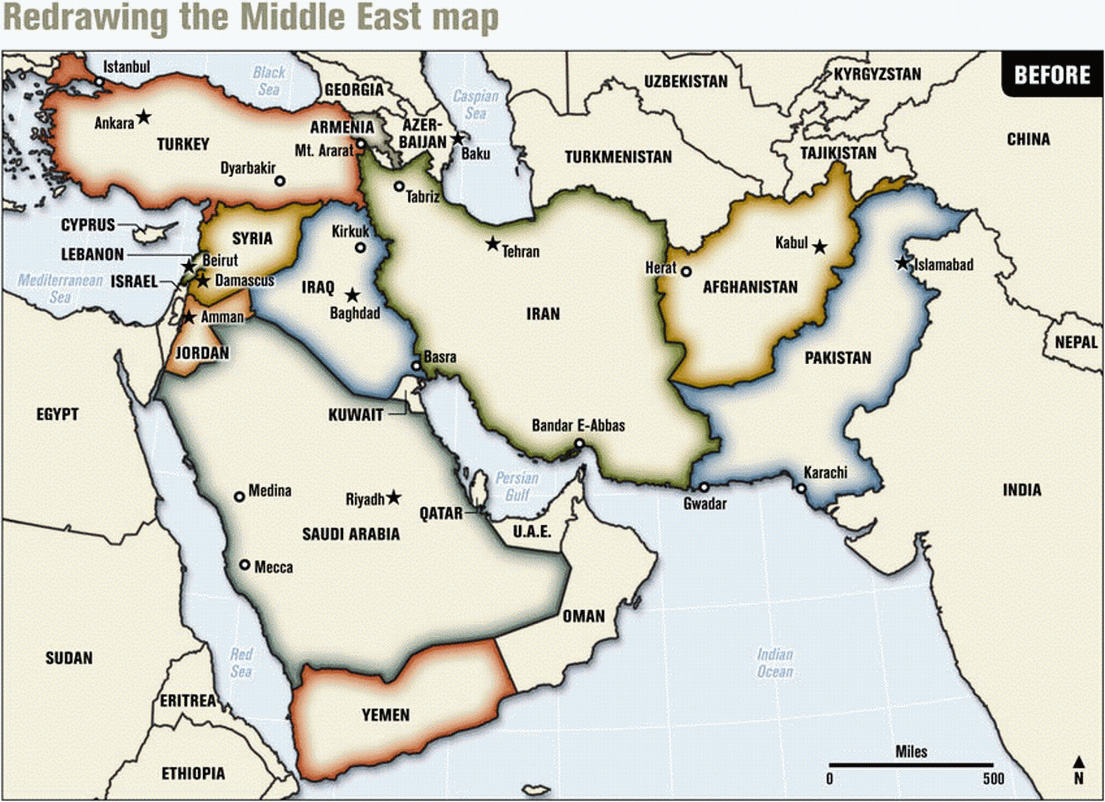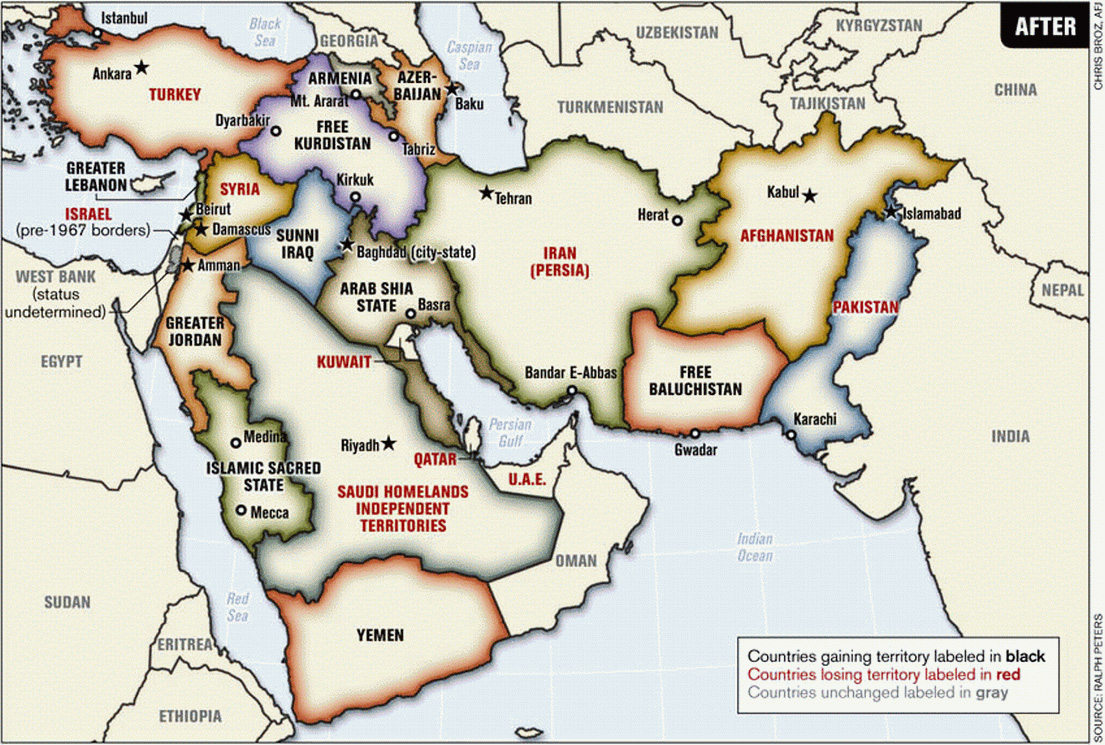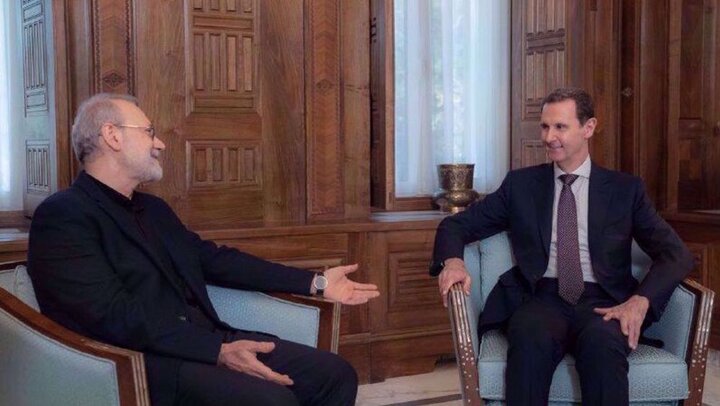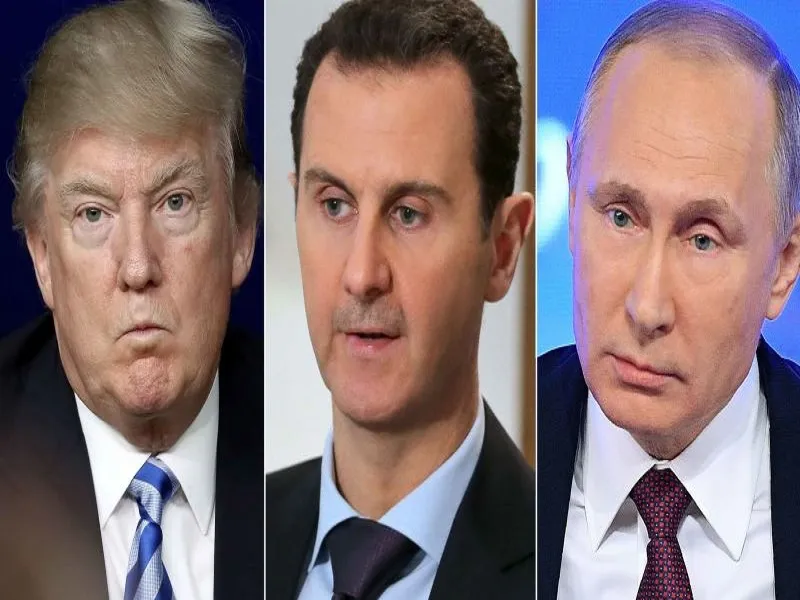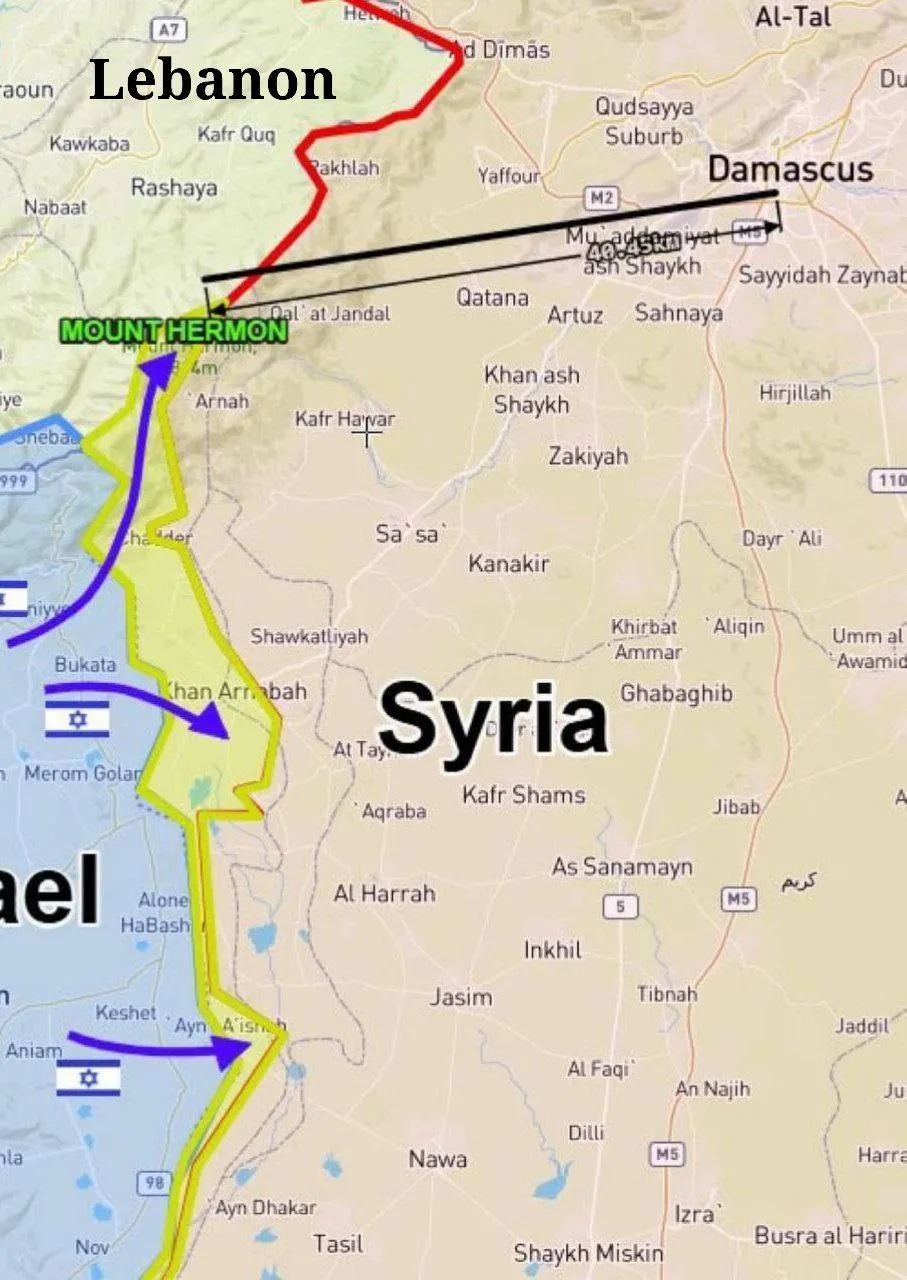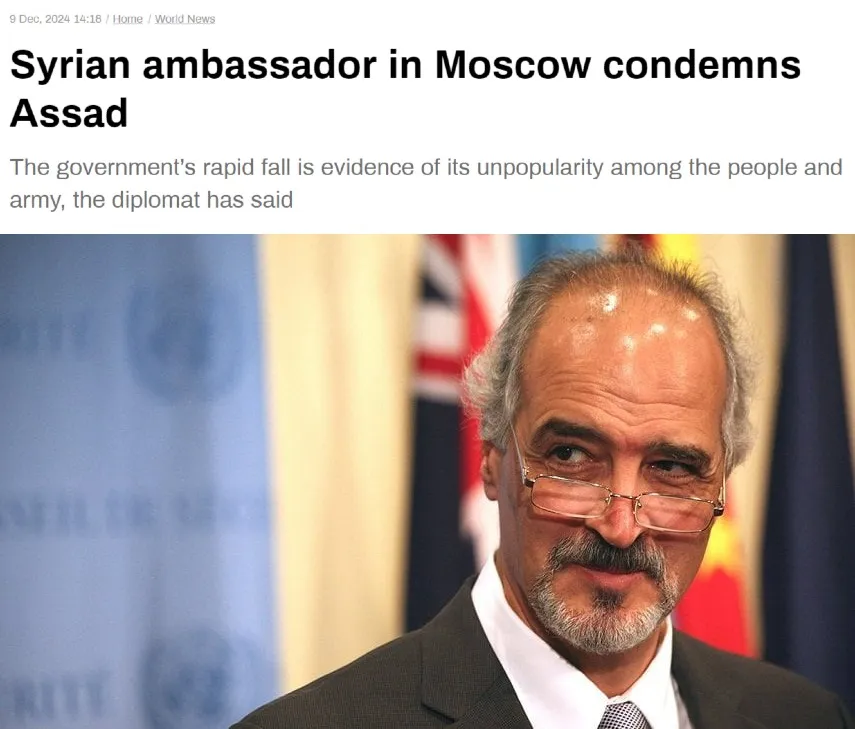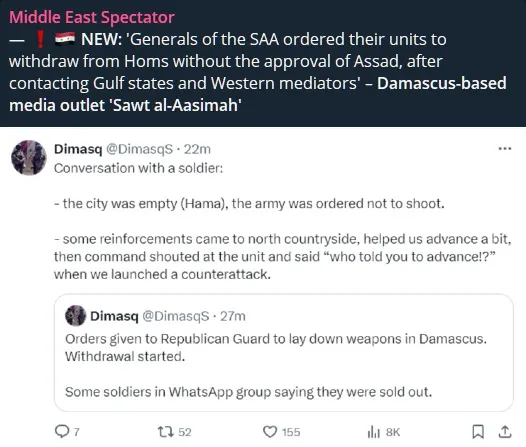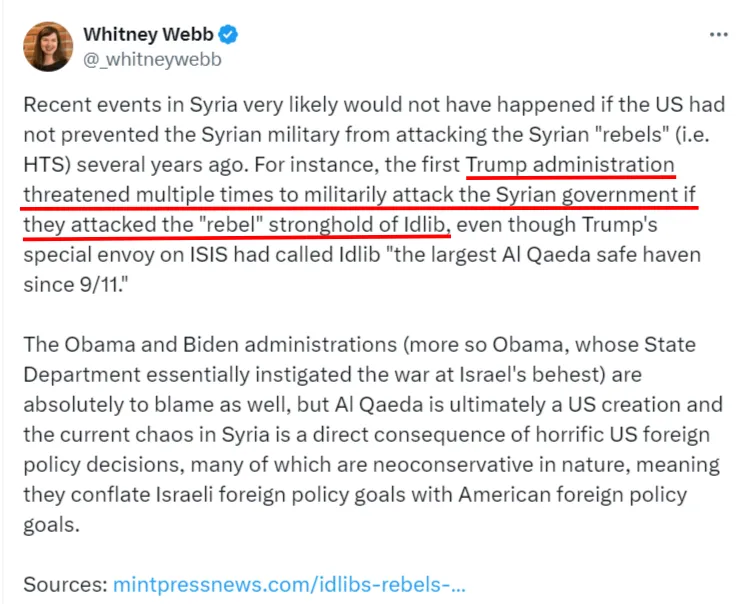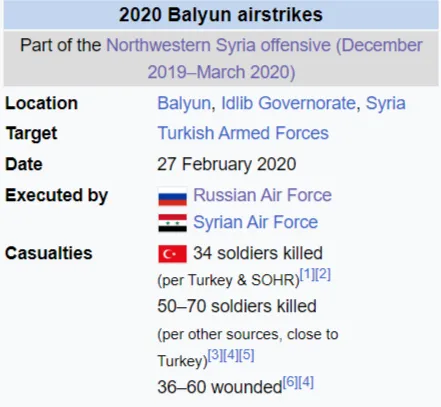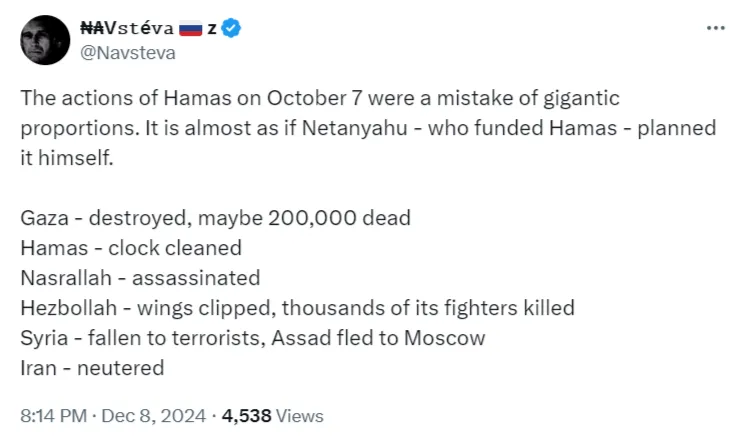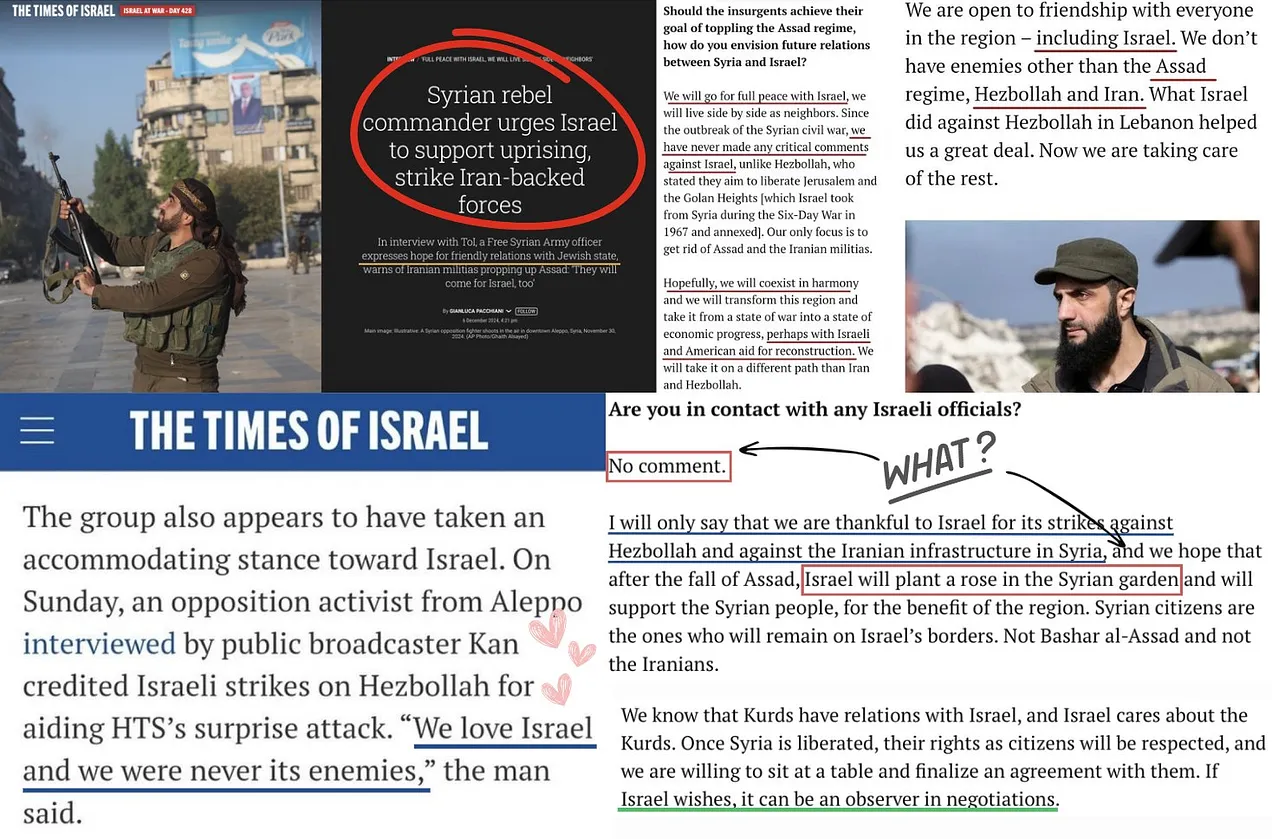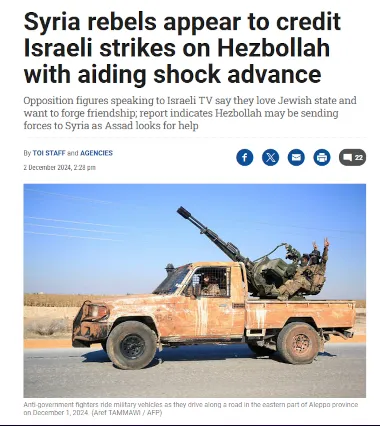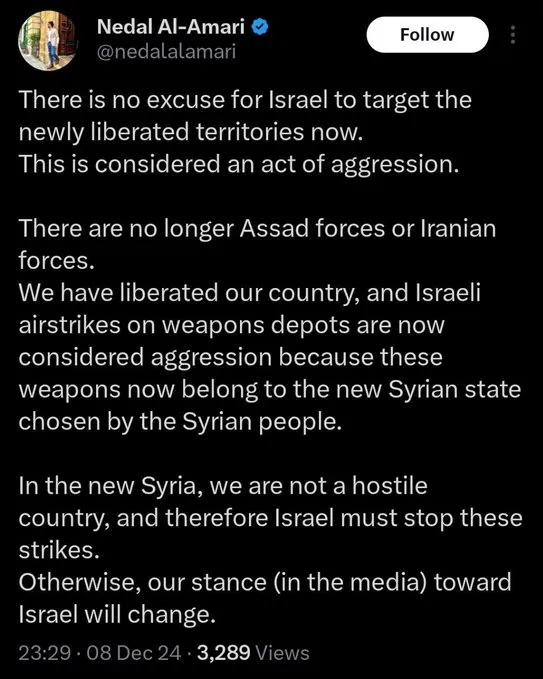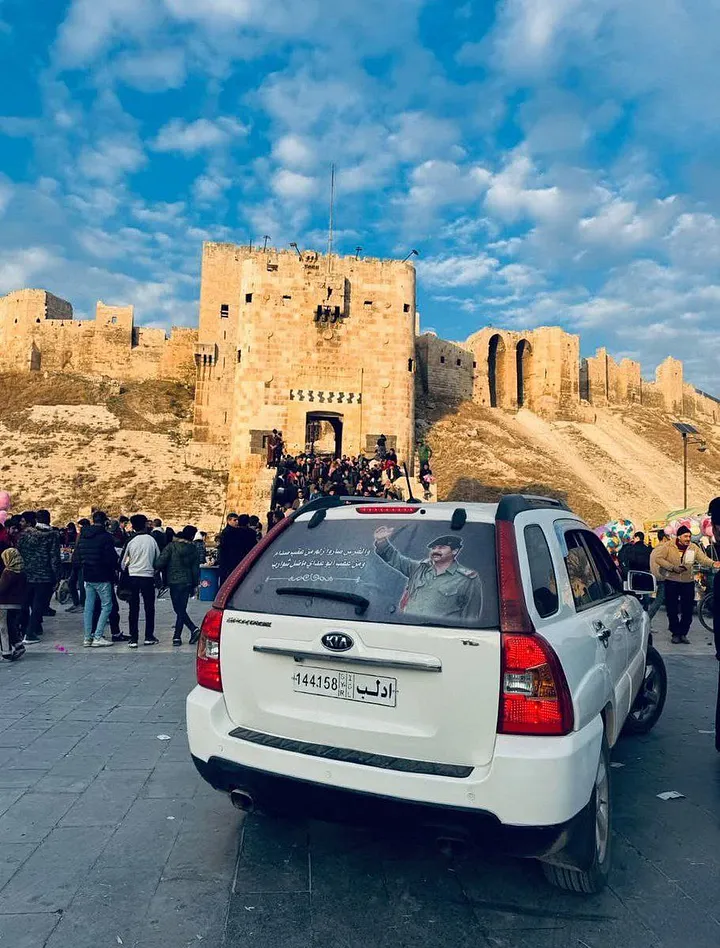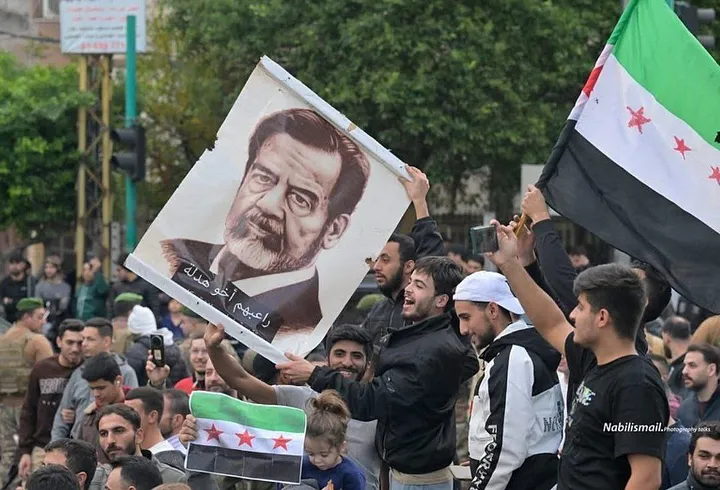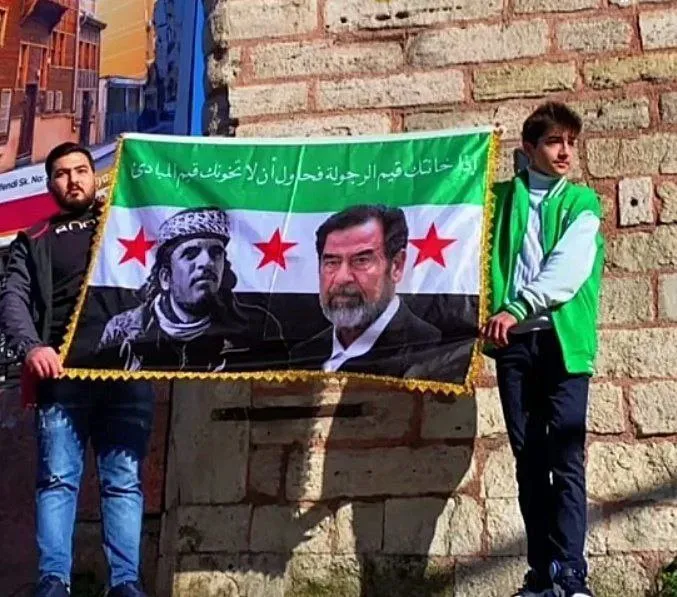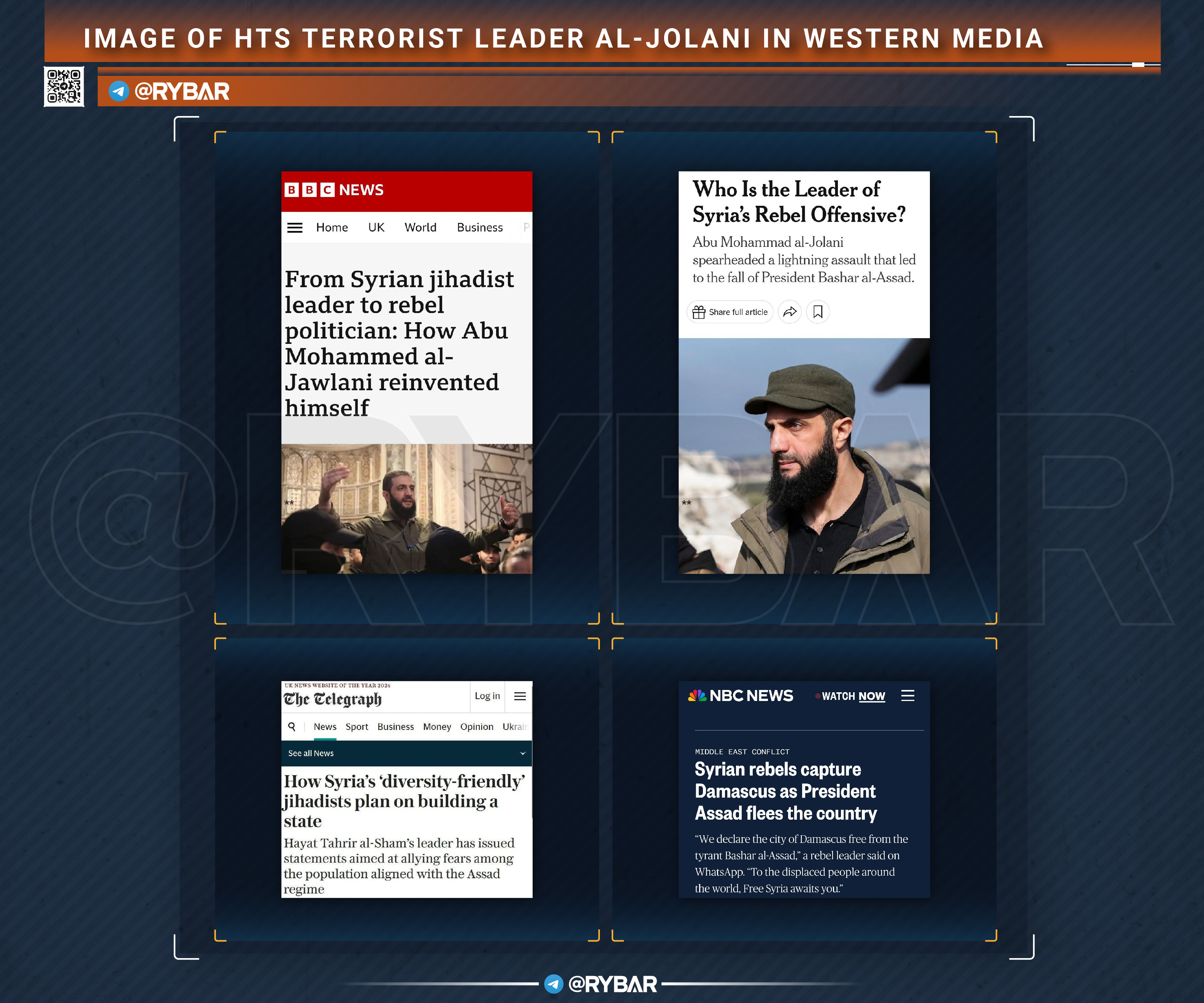Posted by Internationalist 360° on December 5, 2024
Pepe Escobar
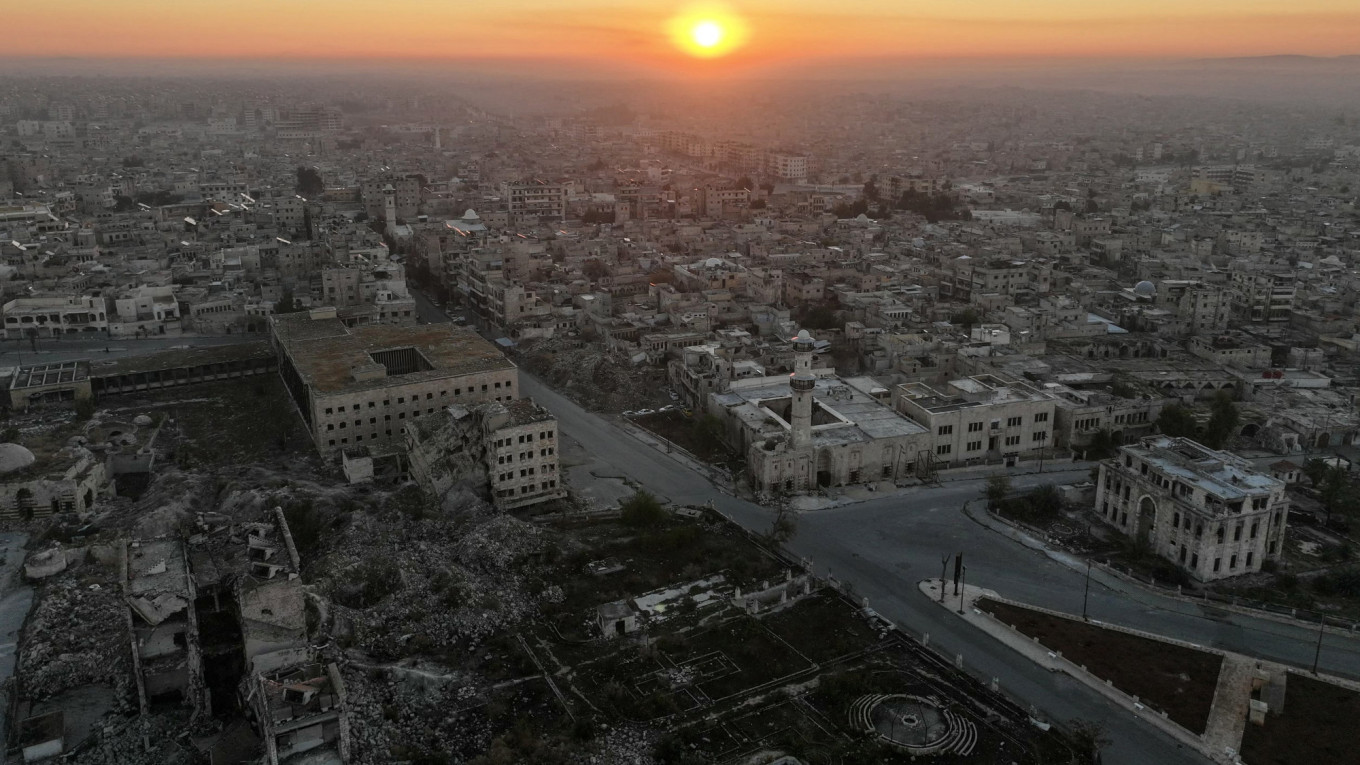
This aerial view shows nearly deserted streets in Aleppo after jihadists and their allies entered the northern Syrian city, November 30, 2024.
The Global Majority should be on full alert. The Greater Idiblistan attack is part of a complex interconnected operation.
The timeline tells the story.
November 18: Ronen Bar, Israel’s Shin Bet chief, meets with heads of MIT, Turkey’s intel.
November 25: NATO Chief Mark Rutte meets with Turkey’s Sultan Erdogan.
November 26: Salafi-jihadis assembled by Hayat Tahrir al-Sham (HTS), formerly Nusa Front, supported by Turkish intel, plus a hefty Rent-a-Jihadi coalition, launch a lightning-fast attack against Aleppo.
The Rent-a-Jihadi offensive originated in Greater Idlibistan. That’s where tens of thousands of jihadis were holed up, according to the – now proven failed – 2020 Damascus-Moscow strategy, which Turkey had to grudgingly accept. The Rent-a-Jihadi mob comprises scores of mercenaries who crossed over from – where else – Turkey: Uighurs, Uzbeks, Tajiks, Ukrainians, even ISIS-K imports.
Iranian Foreign Ministry spokesman Esmail Baghaei, earlier their week, confirmed the Salafi-jihadi offensive was coordinated by US/Israel.
Baghaei did not mention Turkey, even as he stressed the terror attack happened immediately after Israel accepted a ceasefire with Hezbollah – already broken by Tel Aviv dozens of times – and after Netanyahu publicly accused Syrian President Bashar al-Assad of “playing with fire” by allowing the transit of modern Iranian missiles and military equipment via Syria to Hezbollah.
Right before the ceasefire, Tel Aviv smashed virtually all communication routes between Syria and Lebanon. Netanyahu subsequently stressed that the focus now is on “the Iranian threat”, essential to smash the Axis of Resistance.
According to a Syrian special services source, talking to RIA Novosti, Ukrainian advisers played the key role in the capture of Aleppo – providing drones and American satellite navigation and electronic warfare systems, and teaching Syrian collaborators and Islamic Party of Turkestan operatives how to use them.
Syrian Arab Army (SAA) communications were completely jammed by these electronic warfare systems: “The assault groups and drones were equipped with encrypted GPS devices and extensive use of AI, so that the use and navigation of attack UAVs and kamikaze drones took place from a long distance.”
The mechanism was set in place months ago. Kiev made a straightforward deal with Salafi-jihadis: drones in exchange for batches of takfiris to be weaponized against Russia in the US/NATO proxy war in Ukraine.
What is Turkey really up to?
The practical role of Turkey in the Salafi-jihadi Greater Idlibistan offensive is as murky as it gets.
Over the past weekend, Foreign Minister Hakan Fidan, significantly also a former intel chief, denied any Turkish role. No one – apart from the NATO sphere – believes it. No Salafi-jihadi in northwest Syria can as much as strike a match without a Turkish intel green light – as the Ankara system funds and weaponizes them.
The official Turkey line is to support the Syrian – Salafi-jihadi – “opposition” as a whole while slightly deploring the Greater Idlibistan offensive. Once again, classic hedging. Yet the logical conclusion is that Ankara may have just buried the Astana process – by betraying their political partners Russia and Iran.
Erdogan and Hakan Fidan, so far, have failed to explain to the whole of West Asia – as well as the Global South – how this sophisticated Rent-a-Jihadi op could have been set up by US/Israel without any knowledge whatsoever by Turkey.
And in case this would have been a trap, Ankara simply has no sovereign power to denounce it.
What the facts do spell out is that a new front has de facto been opened against Iran; US/Israel Divide and Rule carries the potential to completely smash the Tehran-Ankara entente; and key Russian – mostly aerospace – assets will have to be diverted from Ukraine to support Damascus.
There’s no mystery: for years, Ankara has been dying to control Aleppo – even indirectly, to “stabilize” it for business (to the benefit of Turkish companies) and also to allow the return of a lot of relatively wealthy Aleppo refugees currently in Türkiye. In parallel, occupying Aleppo is also an American project: in this case to seriously undermine the Axis of Resistance to the benefit of Tel Aviv.
What else is new: Sultan Erdogan – now a BRICS partner – once again is in the hot seat. Worse: vis a vis two key BRICS members. Moscow and Tehran expect a lot of detailed explaining. There’s nothing that Putin abhors more than outright betrayal.
Erdogan took the initiative, and called Putin – introducing a twist: he focused on Russia-Turkey economic relations. After the tsunami of sanctions against Russia, Turkey turned into the key, privileged bridge between Moscow and the West. Besides, there are substantial Russian investments in Turkey: gas, nuclear, food imports. Both players always approached the war in Syria connected to geoeconomics.
Rent-a-Jihadi mobs on a roll
Meanwhile, the facts are again implacable. HTS, the former Al-Nusra Front, may not be strictly ISIS; it is rather a Turkey ISIS. Commander Abu Mohammed al-Joulani, de facto Emir of the ultra-dodgy rebrand, ditched all al-Qaeda variants plus ISIS to form HTS. He does command an array of Rent-a-Jihadis – mostly from the Heartland. And he is a darling of Turkey’s MIT. Ergo, a darling of Israel/NATO.
CIA/Pentagon, each operating their own network, weaponized 21 out of 28 Syrian militias, Salafi-jihadi and otherwise, organized by Turkey’s MIT into a sort of mercenary “national army” in Greater Idlibistan, according to Turkish think tank SETA.
Syrian analyst Kevork Almassian has shown how the proverbial “former Israeli officials” admitted supplying the Greater Idlibistan gang with funds, weapons, ammunition and even medical treatment.
Former Israeli Army Colonel Mordechai Kedar openly admitted support for “rebels” to “remove triangle of Hezbollah, Iran and Assad”. The “rebels”, he said, even manifested their desire to “open Israeli embassies in Damascus and Beirut”.
HTS is the latest incarnation of one of the collective West’s favorite toys: the “moderate rebel” (remember Obama/Hillary?) Allegiance is nearly 100% to Ankara. They hate Shi’ites and Alawites – and run an extensive prison network.
It’s HTS Salafi-jihadis who forced the complete surrender of Aleppo – without a fight – and filmed themselves in front of the legendary Citadel. From 2012 to 2016, only a few dozen SAA soldiers managed to successfully defend the citadel, even when they were completely surrounded.
Since the start of the war in 2011, Damascus has never met such a devastating defeat like the fall of Aleppo. Iraq lived something tragically similar with the fall of Mosul in 2014. It’s fair to argue that the absolute majority of Syrians are against the 2020 Russia-Turkey-Iran deal which in fact prevented the liberation of Idlib: a major strategic blunder.
It gets worse – because the problem actually started in 2018, when the Turks were not even in Afrin, and the liberation of Hama/Idlib was interrupted for the sake of liberating the suburbs of Damascus. It’s from there that tens of thousands of jihadis were transferred to Idlib.
When we got to 2020 it was already too late: Idlib was defended by none other than the Turkish Army.
The SAA, when it comes to Idlib, proved itself to be an asleep-at-the wheel disaster. They did not upgrade their defenses, did not integrate the use of drones, did not prepare tactical defense against FPV kamizake drones and observation drones, did not pay attention to the scores of foreign spies. No wonder the Rent-a-Jihadi mob found no resistance to take most of Aleppo in 48 hours.
After the 2020 deal, Iran and pro-Iran forces left Syria, especially in the provinces of Aleppo and Idlib. These sectors were transferred to the SAA. As for Russian businesses, which were already not exactly interested in being sanctioned by going against the Western blockade against Damascus, they were snubbed by the local clans, tribes and families.
This time, it was clear for months that HTS was preparing an offensive. Warnings were sent to Damascus. But the Syrians trusted the deal with Turkey and the re-established relations with Arab nations. Big mistake.
All that yields at least two serious lessons for Russia. From now on, whatever happens, Moscow will have to reign in these incestuous – and corrupt – Syrian networks to actually help defending the nation’s sovereignty. And what happened in Idlib shows that the war against the banderistas in Kiev will have to go all the way to the Dniester, and not stop at the borders of the Donetsk republic.
War on the road – in a connectivity crossroads
So far, HTS and the Rent-a-Jihadi mobs are not making too many mistakes. They are trying to occupy all roads feeding Aleppo to impose further battles as far away from the city as possible, so they have time for a complete take over.
War in West Asia is an on the road affair. Either with horses in the desert or with Toyotas. Not much is mined, and there’s no mud like in Ukraine. So the Syrian war is in constant flux – and always on the road. HTS is already using the M4 highway from Idlib and advancing on sectors of the crucial M5 from Aleppo to Damascus.
Meanwhile, the lineaments of a counter-offensive are being put in place. From Iraq, tens of thousands of Shi’ite, Yazidi and Christian militias from Kata’ib Hezbollah, the Fatemiyoun Brigade, and Hashd al-Shaabi (the Popular Mobilization Units, PMUs, very experienced in the fight against ISIS) entered Syria in the northeast via the al-Bukamal crossing.
The 25th division/Tiger Forces of respected commander Suhail Al-Hassan, in fact the best Syrian forces, are on the move alongside tribal militias.
Syria is an absolutely key connectivity crossroads – harking back to the Ancient Silk Roads. If the US/Israel combo achieves their perennial dream of regime change in Damascus, they block the crucial transit point for Iran to the Eastern Mediterranean.
They would also enable/force Qatar to finally build a pipeline to provide natural gas to Europe through Syria, one of Brzezinski’s gambits to replace Russian natural gas – and a dossier I was examining in detail already 12 years ago.
The US Deep State’s tactics are not exactly a novelty; trying to divert Russia by focusing on Syria; stretching Moscow out; and relieving pressure on Ukraine, right before the signing of the very serious Russia-Iran comprehensive strategic partnership.
But there are complicating factors for the US. Saudi Arabia, which was an avid terror supporter at the start of the war on Syria, changed its policy after Russia got involved in 2015. And now Riyadh is also a – still sitting on the fence – BRICS partner. Saudi Arabia, Egypt and UAE, significantly, are supporting Assad against the HTS goons.
Syria is absolutely crucial for Russia’s overall West Asia-African strategy. Damascus is a key Russian connection to Africa – where Moscow is de facto deploying its full global power, as I recently witnessed in South Africa, with some intriguing add-ons in the form of de facto counter-sanctions against Western oligarchs, whose positions across Africa are being serially undermined.
BRICS members Russia and Iran have no other choice: they need to fix, by whatever means necessary, the incompetence displayed by Damascus and the SAA, so they may maintain their access to the Eastern Mediterranean, Lebanon, Iraq and beyond. That implies a very serious move: Russia deviating key assets from the battle in Novorossiya to preserve a relatively sovereign Syria.
Sleepwalking into the First BRICS War
As it stands, the SAA seems to have set up a still fragile defense line in the villages north of Hama. Fabled Gen Javad Ghaffari, former number two to Gen Soleimani, a specialist in all war on terror vectors, has arrived from Iran to help. By the way, in 2020 he wanted to go all the way to Idlib. That’s why Assad demanded he would have to leave; Damascus opted to freeze the war. Now it’s a completely different ball game.
The Rent-a-Jihadi/NATO Greater Idlibistan mob has zero air defenses. They are now being hit virtually non-stop by Russia/Syrian jets.
The situation in Aleppo is dramatic. The HTS-led terror gangs have control over virtually the whole Red Zone, and the rare sectors not yet invaded are under siege. They are also advancing on the Aleppo-Raqqa front, but so are the US-supported Kurds: that means a NATO advance. In the desert, everything is eerily silent.
The Russian Army had only 120 people in Aleppo. Those that survived left. So what’s ahead for Russia? The best possible medium-term scenario would be to concentrate on Lattakia; teach Syrian soldiers how to fight Russian-style; and direct them on how to properly liberate their own nation.
The immediate step is to realize the dire consequences of offering a safe haven for tens of thousands of terrorists in Greater Idlibistan back in 2020.
The next step is to fully understand that if Moscow negotiates a sort of Minsk-3 with NATO – which is essentially what Trump would push for – Kiev will become Idlib 2.0. And the banderista gangs will make sure that there will be new – fallen – Aleppos inside the Russian Federation.
The Global Majority should be on full alert. The Greater Idiblistan attack is part of a complex interconnected operation – with chaos deployed as the preferential tool – aimed to turn West Asia upside down and literally set it on fire. That may well be metastasizing into the First BRICS War.
https://libya360.wordpress.com/2024/12/ ... brics-war/
Timber Sycamore 2.0: How the US and Israel Quietly Revived Al-Qaeda Allies in Syria’s Idlib Offensive
Posted by Internationalist 360° on December 5, 2024
Robert Inlakesh
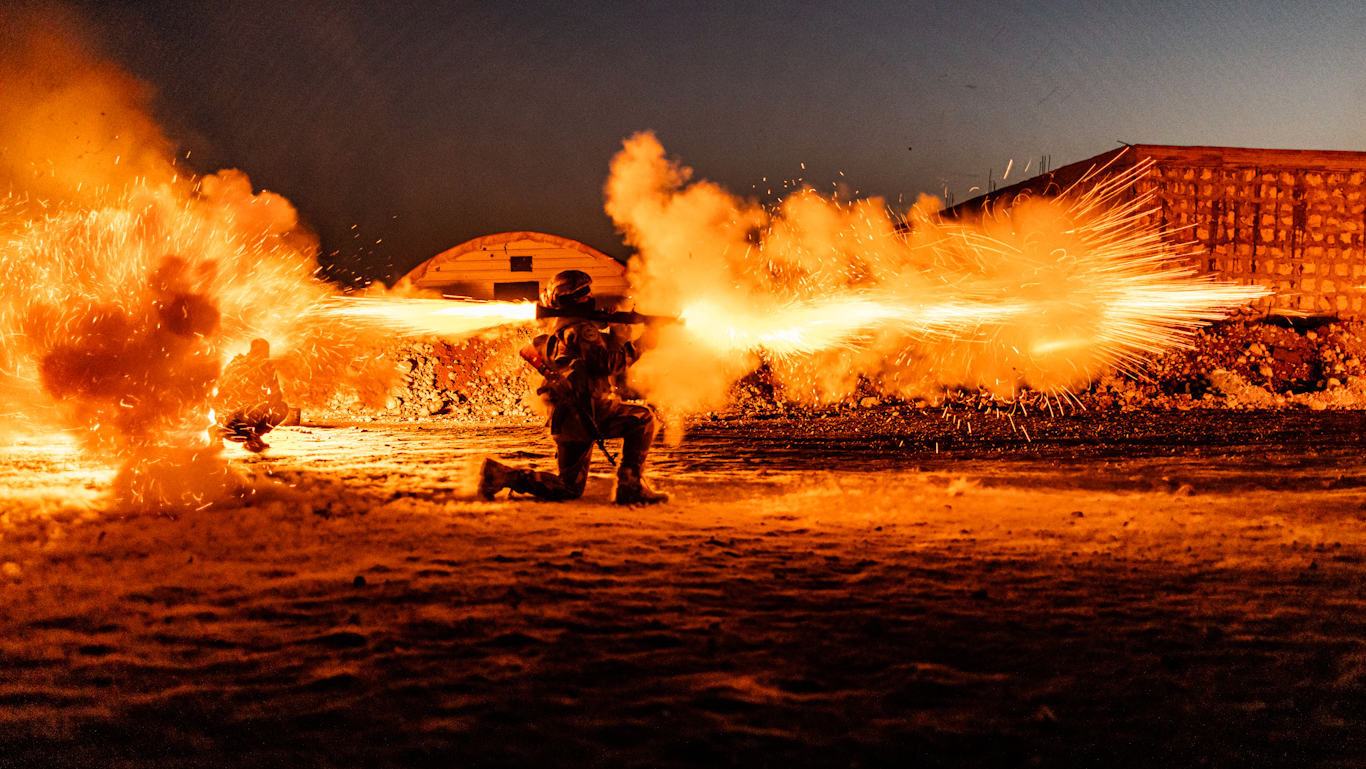
As Syrian opposition forces, spearheaded by the Al-Qaeda affiliate Hayat Tahrir al-Sham, intensify their offensive to seize more territory after capturing Aleppo, Washington has distanced itself from the attack—a remarkable reversal, considering its longstanding support for weaponizing so-called “moderate rebel” groups based in Idlib.
Under President Barack Obama, the U.S. government secretly poured billions into a covert operation designed to topple Bashar al-Assad’s government. The CIA’s Timber Sycamore program, one of the agency’s most expensive undertakings, at its peak, funneled $100,000 per Syrian militant trained—many of whom would ultimately fight under the banner of Al-Qaeda-linked factions.
The full extent of Washington’s complicity was laid bare in leaked cables, which revealed a startling admission from Jake Sullivan, then-Deputy Chief of Staff, to Hillary Clinton in 2012: Al-Qaeda “is on our side in Syria.” Brett McGurk, the National Security Council’s coordinator for the Middle East, later labeled Idlib as “the largest Al-Qaeda safe haven since 9/11.”
In a 2020 subcommittee hearing of the House Foreign Affairs Committee, Dana Stroul, who would later become the Deputy Assistant Secretary of Defense (DASD) for the Middle East under the Biden administration, argued that “Russia and Iran do not have the resources to stabilize or rebuild Syria.” She pointed out that the Syrian economy, already reeling, was “continuing to spiral downward,” a situation worsened by the economic crisis in Lebanon and the U.S.-led sanctions regime.
Stroul went on to suggest that “here is the opportunity,” advocating for a proactive approach. She proposed the U.S. begin planning how to “leverage the next outbreak of violence to reinvigorate a political process.” Stroul went on to emphasize that this strategy should include U.S. rapprochement with Turkey, along with maintaining a firm stance on political matters, sanctions, and the denial of reconstruction aid.
The objective has been unwavering: to drive Iran out of Syrian territory and compel Damascus to forsake its alliance with Lebanese Hezbollah. This ambition is more than strategy—it is a vision to reshape the region’s balance of power in favor of Israeli and American interests.
In the aftermath of the HTS’s capture of Aleppo, the United Arab Emirates and the United States seized the moment to push forward their vision of a new Middle East with calculated precision, extending an offer that speaks to the heart of Syria’s struggle: sanctions relief in exchange for severing ties with long-time ally Iran.
Earlier this year, the pro-regime change lobbyist coalition, calling its American Coalition for Syria, held meetings with US officials in Washington during its annual day of advocacy, where there was advocacy for financing al-Qaeda-linked groups. According to a report published by The Grayzone, Republican Florida Sen. Rick Scott’s chief of staff reassured the Syrian opposition advocates that “the Israelis want you guys in charge.”
The extremist rebranded Al-Qaeda “rebels” in Syria told the Israeli media, “We love Israel”.
They praised Israel for bombing Hezbollah and other resistance groups.
They asked Israel to help them overthrow Assad so they can create a new pro-Israel, pro-Western regime in… pic.twitter.com/S1frP72rE6
— Ben Norton (@BenjaminNorton) December 3, 2024
Analyses from pro-Israeli think tanks, such as the Washington Institute for Near East Policy (WINEP), portray an Arab League that has shifted its stance to support Damascus. However, this support comes with a calculated purpose: advancing an anti-Iran agenda that aligns seamlessly with the objectives of both the United States and Israel.
The overarching goal is clear—a negotiated settlement in Syria that compels President Bashar al-Assad to sever ties with Iran and halt the flow of weapons to Hezbollah.
Over the past few years, as the war in Syria settled into a stalemate, the Western foreign policy establishment embarked on an effort to rebrand Hayat Tahrir al-Sham (HTS). Central to this effort was the reinvention of HTS’s leader, Abu Mohammad al-Julani. Known for his military fatigues, al-Julani reappeared on American television in a dramatically different fashion—donning a suit and presenting himself as a polished, formal leader.
In its analysis of HTS, Washington-based think tank the Center for Strategic and International Studies noted:
HTS’s messaging has clearly publicized its Syrianization measures, counterterrorism campaigns against transnational Islamist groups, and attempts at building a governance structure in northern Idlib. This sustained messaging and the lack of military operations outside areas HTS controls indicate that the group will continue to position itself as a relatively moderate governing force in Syria in an effort to receive international aid, resources, and eventually recognition.”
James Jeffrey, a former U.S. ambassador and Special Representative for Syrian Engagement during the Trump administration, described Hayat Tahrir al-Sham (HTS) as “an asset” to U.S. strategy in Idlib.
The rebranding of Hayat Tahrir al-Sham HTS has moved forward despite damning reports of torture and human rights abuses, with the group even targeting journalists in Idlib who were sympathetic to its cause. A 2020 United Nations report cast an even darker shadow, noting that every major faction in Syria, including HTS, has relied on child soldiers to bolster its ranks.
While the United States publicly distances itself from direct involvement in the latest escalation in Syria, the reality is more complex. Openly supporting groups officially designated as terrorist organizations risk embarrassment that Washington would prefer to avoid.
Feature photo | A fighter from the extremist Hayat Tahrir al-Sham (HTS) militant group takes part in a military manoeuvrer with live ammunition in Idlib,Syria on August 17, 2023. Anas Alkharboutli | AP
https://libya360.wordpress.com/2024/12/ ... offensive/
******
Syria under attack and who will stand by her?
My reports for UK Column News yesterday
vanessa beeley
Dec 05, 2024
Statement issued by the General Command of the Army and Armed Forces:
Over the past few days, our armed forces have fought fierce battles to repel and thwart the violent and successive attacks launched by terrorist organizations on the city of Hama from various axes and in huge numbers, using all means and military equipment, and with the help of immersion groups.
During the past hours, with the intensification of confrontations between our soldiers and terrorist groups and the rise of a number of martyrs among our forces, these groups were able to penetrate several axes in the city and enter it, despite suffering heavy losses in their ranks.
In order to preserve the lives of civilians in Hama and not to involve them in battles inside the cities, the military units stationed there redeployed and repositioned themselves outside the city.
The General Command of the Army and Armed Forces affirms that it will continue to carry out its national duty in reclaiming the areas entered by terrorist organizations.
More updates later
(Video at link.)
https://beeley.substack.com/p/syria-und ... dium=email
******
From Cassad's Telegram account:
Colonelcassad
Forwarded from
Readovka
The balance of power in Syria — what are the main groups operating in the newly flared-up country?
At the end of November, a new round of escalation of the conflict occurred in Syria — Hayat Tahrir al-Sham* militants and friendly gangs began an offensive from the Idlib zone to Aleppo. A couple of days later, the city, which our and Syrian troops had once gnawed away from the militants, was lost. Now the clashes continue — more than 10 years after the start of the civil war in the country. The balance of power has also changed. Readovka briefly lists who is operating in Syria, with the exception of the Syrian Arab Army, which is fighting on behalf of the official government.
It is worth dwelling separately on HTS. This terrorist group did not join the peace process in March 2020, nor did small detachments of mercenaries and radicals from all over the world. In essence, the group plays the role of a "torpedo", the outcome of which will show whether other pro-Turkish forces (for example, the Syrian National Army, FSA), which signed the peace agreement, will also oppose the Assad government. It is mainly the HTS militants who are currently fighting.
The Kurds, a people living in the south of Turkey and the north of Syria and Iraq, stand apart. Even before the start of the civil war, relations between the official government and the people without their own state were, to put it mildly, strained. However, the differences were temporarily put aside - terrorists from Jabhat al-Nusra* and other groups that were previously part of the FSA appeared in the territories historically inhabited by the Kurds. And then most of the militants operating in these areas de facto swore allegiance to ISIS*, which ultimately led to an agreement between Damascus and the Kurdish Self-Defense Forces. That is, the Kurds temporarily became a force neutral in relation to the Assad government, which defended itself from the militants.
In the southeast, in the province of Homs, there is a special zone of al-Tanf. Officially, there is a base of the international coalition led by the United States and refugee camps here, but in reality there is a lot of evidence that FSA militants are stationed there - in 2015, this area became an area of activity for ISIS mobile groups, with whom the FSA did not engage in battle. Then, clashes between the SAA and ISIS took place here. Radical cells, despite the defeat of the Islamic State in Syria, still exist in this zone - their members carry out attacks on military and civilians, and although such raids are episodic, they pose a real threat.
A new force that appeared in Syria relatively recently - the Iraqi Shiite militia Hashd al-Shaabi - stands apart. Videos of its units were flying around the Internet the day before. Why did they end up in this territory? It's simple: the Syrian Shiites are directly threatened by HTS. After all,terrorists do not care whether it is military or civilian - they kill on religious grounds. And now everyone is under attack in Syria - Kurdish Yazidis, Alawites, Christians, Shiites and those Sunnis who turned out to be disloyal to the militants. Apparently, the Hashd al-Shaabi remembers very well the experience of the Islamists' entry into northern Iraq, when many peaceful Shiites suffered.
* - terrorist groups banned in the Russian Federation
https://t.me/s/boris_rozhin
Google Translator







